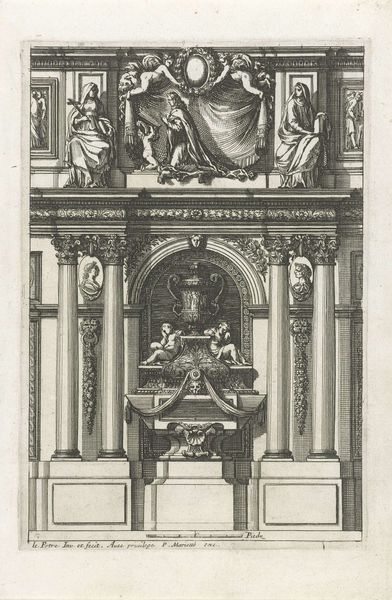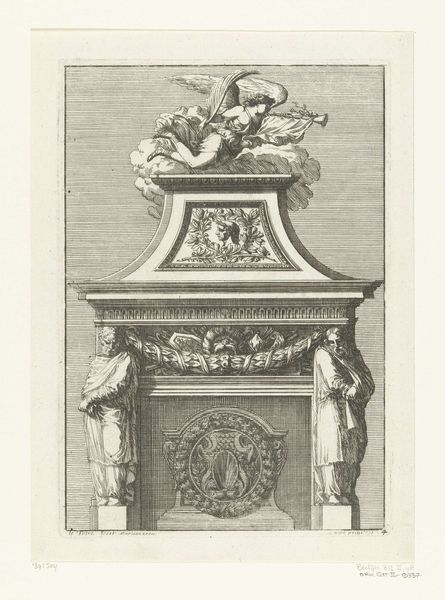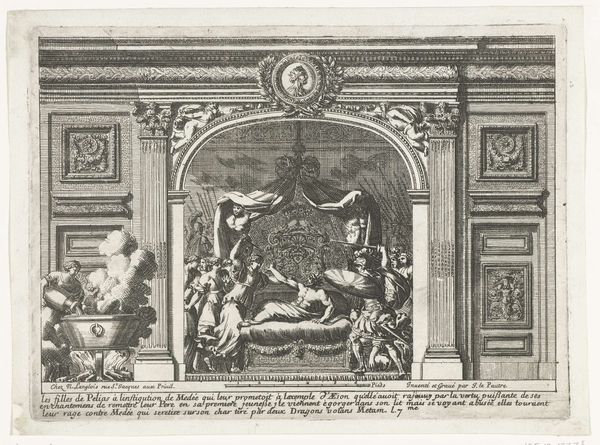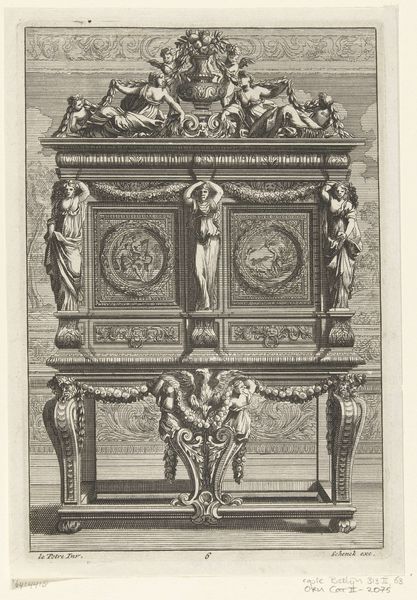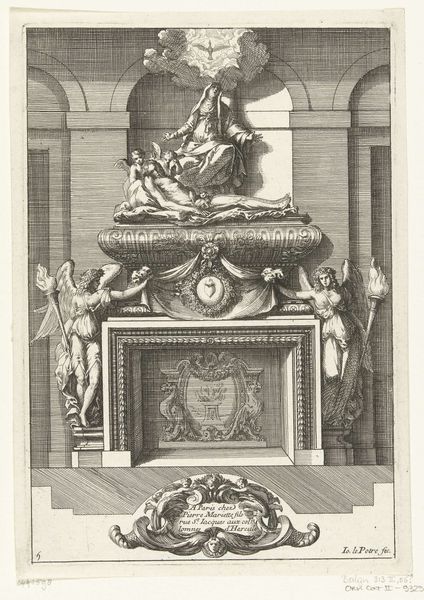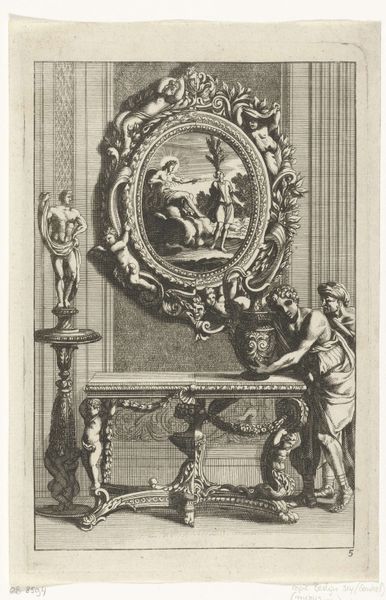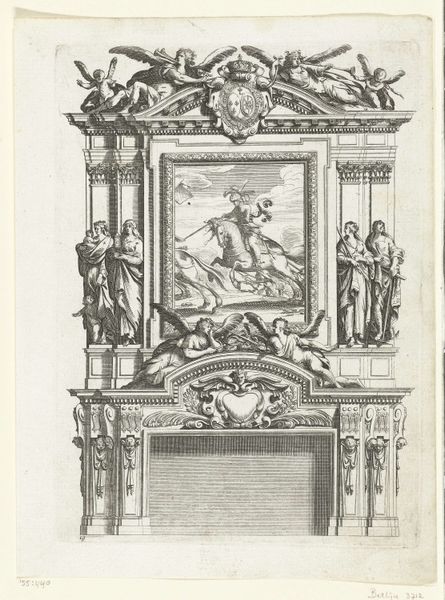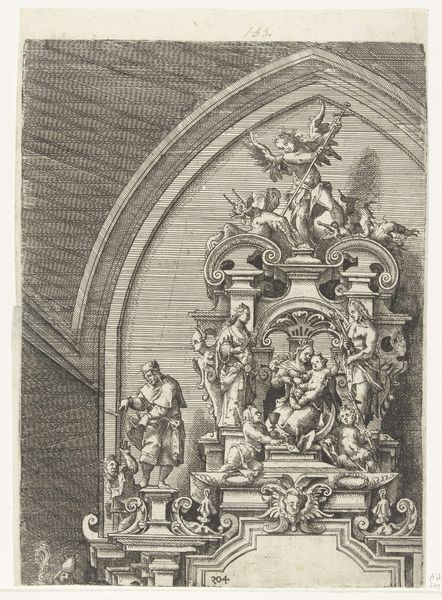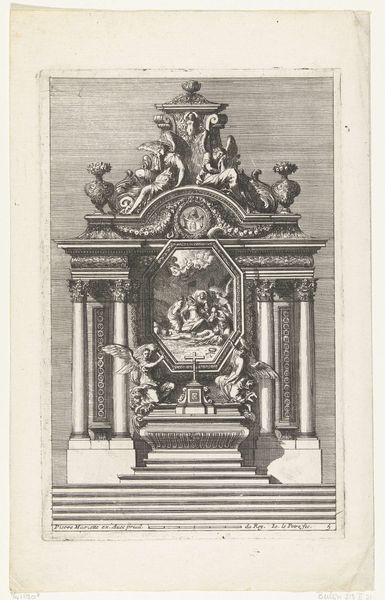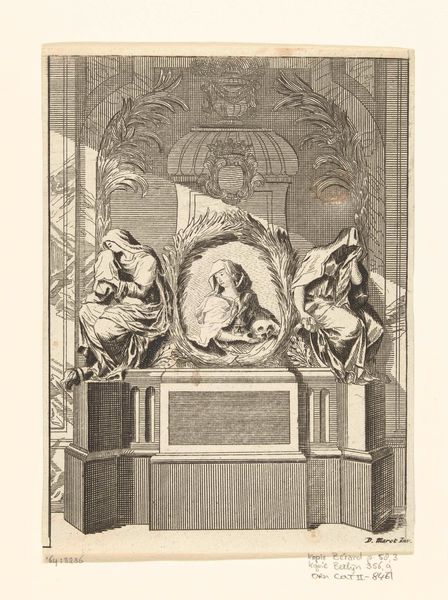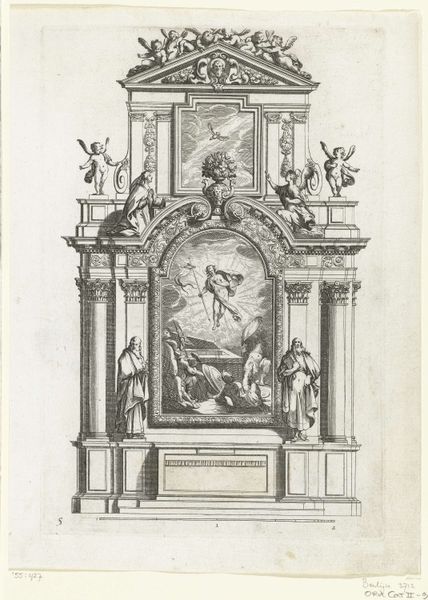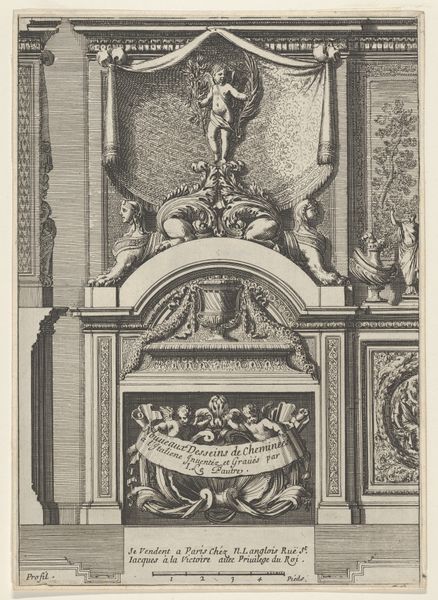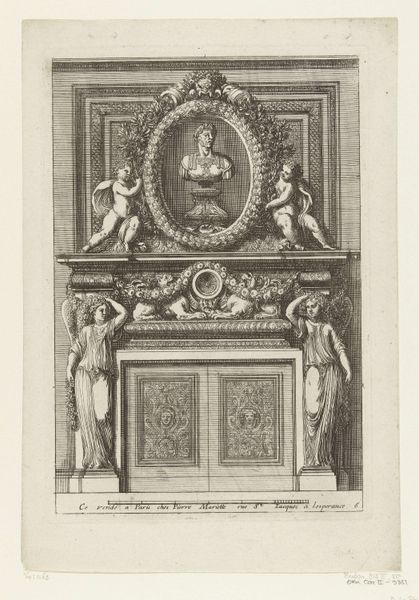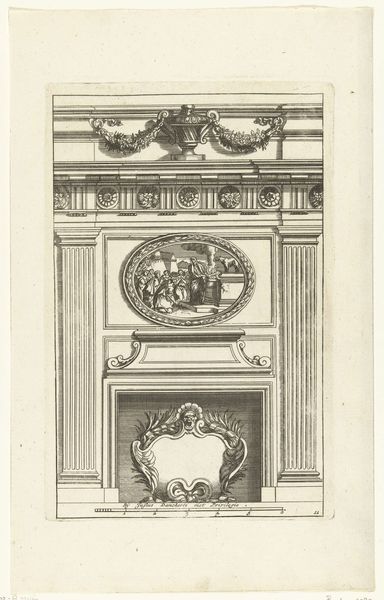
engraving
#
allegory
#
baroque
#
old engraving style
#
figuration
#
form
#
line
#
history-painting
#
engraving
Dimensions: height 225 mm, width 155 mm
Copyright: Rijks Museum: Open Domain
Editor: This is "Grafmonument," an engraving created around 1661 by Jean Lepautre, currently residing in the Rijksmuseum. The elaborate detail is quite striking. The weight of the figures and ornate decoration feels somber to me, but also powerfully symbolic. What symbols do you see within this piece? Curator: A rich tapestry of them. Right away, the two sphinxes invoke ancient wisdom and guardianship. Are they warding off evil, or guarding secrets? The garland of flowers, often seen at funerals, hints at themes of remembrance. And what do you make of those figures seated at the base, covering their faces? Editor: They seem to embody grief, a profound sorrow. I'm particularly interested in the figure at the top – she’s holding a portrait. Who could that be? Curator: She is Allegory, often understood to be the embodiment of Justice, and the portrait might signify the departed. Notice how she directs the viewer to the symbolic history. What could this moment represent for you? Editor: That it's about more than just death. It's an elaborate monument for someone of significance, but rendered through symbols designed to teach and immortalize. I didn’t quite register that before. Curator: Indeed. Lepautre used the language of his time—classical allusions mixed with baroque drama—to construct a lasting memorial. Think about how artists today also use symbolism, even if the forms are different. Editor: That’s fascinating to think about. I’ll definitely look at other baroque engravings with fresh eyes.
Comments
No comments
Be the first to comment and join the conversation on the ultimate creative platform.
